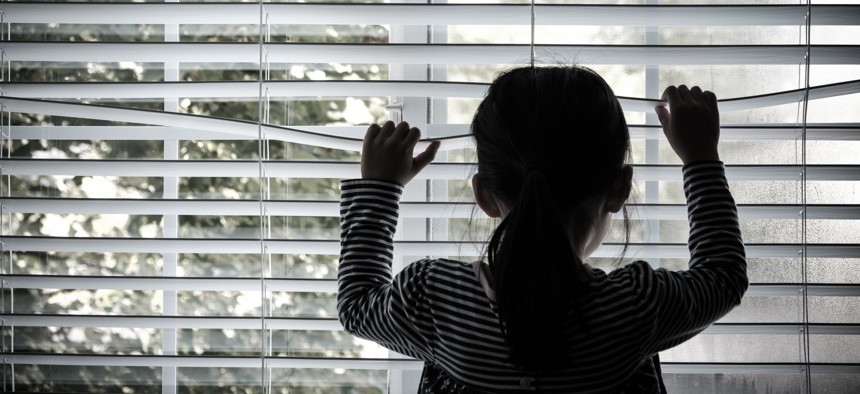State Spending on Anti-poverty Programs Could Substantially Reduce Child Abuse and Neglect

iStock.com/Kenishirotie
Public investments in benefit programs could save tens of thousands of children from being victims of child abuse and have important later-life effects on child welfare and overall health.
The big idea
States’ financial investments in public benefit programs for low-income families are associated with less child abuse and neglect, also known as maltreatment. These investments are also associated with less need for foster care and maltreatment-related deaths, according to our recent publication in the journal Pediatrics.
Our research team included the two of us – Hank Puls, a pediatrician who conducts research on the prevention of child maltreatment, and Paul Chung, who studies childhood determinants of adult health – as well as Matthew Hall, James Anderst, Tami Gurley and James Perrin.
Our study examined the relationship between states’ rates of child maltreatment and their annual spending per person in poverty on major benefit programs from 2010 to 2017. Benefit programs included those providing cash, housing or material resources, childcare assistance, refundable earned income tax credits and medical assistance programs such as Medicaid.
Our findings indicate that an increase of US$1,000, or 13%, in annual spending per person in poverty on these programs by all 50 states and Washington, D.C., might be associated with approximately 181,000 fewer children reported for maltreatment, 28,500 fewer victims, 4,100 fewer children entering foster care and 130 fewer children dying – every year.
Our results also suggest that reductions in child maltreatment might provide fiscal returns in the long term for states and society. The 13% increase in spending amounted to $46.5 billion nationally. We estimate these reductions might return $1.5 billion to $9.3 billion in avoided economic burdens associated with maltreatment in the short term, but as much as $25.8 billion to $153.2 billion over the course of children’s lives.
Why it matters
Child maltreatment is a public health crisis. By 18 years of age, at least 1 in 8 U.S. children will have experienced abuse or neglect. This leads to poorer overall health and mental health, as well as worse socioeconomic outcomes, for those individuals and society.
We believe that our study serves as an example of how benefit programs might have positive effects beyond their stated objectives. Benefit programs likely have powerful, broad and unmeasured effects on a host of health issues – the combined impacts of which might dwarf those found for child maltreatment alone.
For example, Medicaid expansion improves health care access and some health and mental health outcomes. Medicaid also significantly reduces poverty and can reduce parental stress. Our study suggests that that one such “side effect” of benefit programs may be improving families’ overall well-being to the extent that fewer children are abused or neglected.
What still isn’t known
A more nuanced understanding of how benefit programs might prevent child maltreatment is needed. Poverty is not equally distributed among all children in the U.S., and how these programs might affect maltreatment and other health-related disparities in specific populations remains unknown.
The COVID-19 pandemic may have led to an increased risk for child maltreatment. But it’s still unclear whether economic relief, such as the CARES Act and eviction protections, aided in reducing some of the perceived risk, if at all.
More recently, the American Rescue Plan Act provided direct economic relief to Americans and included fundamental changes to tax credits, such as the Child Tax Credit and the Earned Income Tax Credit. These changes increased income for families and, in some cases, better allocated benefits to the lowest income Americans. President Biden’s American Families Plan proposes to extend those tax credit reforms and additionally invest in child care and early education. It will be critical to examine how these policy changes to benefit programs might influence poverty, child maltreatment and well-being, in general.
What’s next
We believe that ample opportunities remain to responsibly invest in public benefit programs. For example, 12 states have yet to expand Medicaid, over 30 million Americans remain uninsured, 6 in 7 eligible families do not receive child care assistance and 1 in 6 U.S. children still live in poverty.
Our findings provide optimism that public benefit programs can not only lift families out of poverty but also address child maltreatment and improve health more broadly.
[Over 110,000 readers rely on The Conversation’s newsletter to understand the world. Sign up today.]
This article is republished from The Conversation under a Creative Commons license. Read the original article.
Henry T. Puls is an associate professor of pediatrics at the University of Missouri-Kansas City and Paul J. Chung is the adjunct professor of pediatrics and health policy and management at the University of California, Los Angeles.





